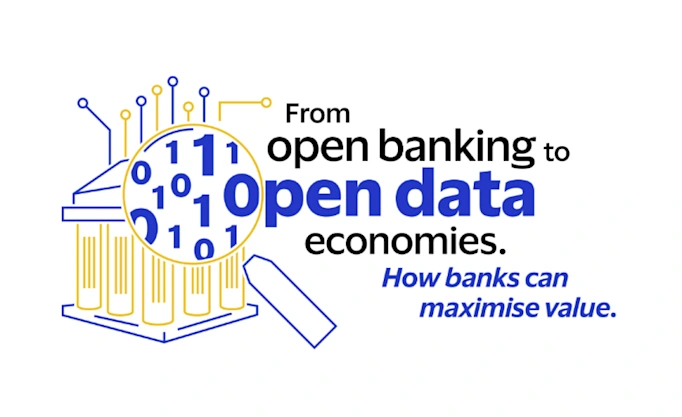Build vs buy – a lender’s guide to the pros of partnership

With the digital transformation of financial services, finding the ultimate user experience is one of the biggest challenges banks and lenders face today. In light of this, we’ve put together a simple guide to the pros of partnering with a fintech company versus building in-house solutions – all to boost UX by getting a piece of the data pie.
To help lenders on the hunt for the best user experience, we've put together a guide to the pros of building with a partner vs building in house
Choosing the right fintech partner ensures high-quality, seamless user experiences at a lower cost
For example, Tink’s categorisation of real-time transaction data enable lenders to verify applicants’ income in a matter of seconds
Good data = better performance
Big data is not a buzzword any more: according to Accenture, the world produces 2.5 billion gigabytes of data per day. By 2025, we will be producing data at a rate of 463 exabytes per day. To put that into perspective: in 2009, the world’s entire digital storage capacity was ‘just’ 487 exabytes. By tomorrow’s standards, we’d fill that volume in under two days.
From a business perspective, this data is a virtual gold mine of consumer information. But you need smart systems to properly leverage the data to boost business.
Take the banking and lending industry for example. PSD2 enables access to millions of applicants’ transactional data – we are talking about billions of transactions, with data ripe for the picking. But without the right tools and infrastructure to use it this data will be a burden rather than an enabler.
The importance of data categorisation
An important step to leveraging transactional data is categorisation. At Tink, raw transactions are categorised, harmonised, and presented in various use cases. Through data categorisation, we help consumers understand their climate impact and make more sustainable choices with a new carbon tracking feature in mobile banking apps. We can also verify an applicant’s income in a quick, safe, and fully digital flow by tapping into their bank account data.
Verify applicants’ income by categorising transaction data
By categorising an applicant’s incoming transactions, businesses can instantly verify a person's income with secure, real-time data – directly from their bank account. At Tink, we’ve been working on refining our machine learning models for 10 years, with more than 1 billion transactions a month. Earlier in 2021, we released Income Check to enable businesses to leverage transaction data in a safe and efficient way.
With the help of pattern recognition, incoming transactions to a user's bank account can be grouped and filtered by recurrence and other criteria, to extract only the ones that constitute income streams. Each stream is classified and labelled with the type of either salary, pension, benefits, cash deposit, or other.
There’s no time like real time
It’s one thing to build a model making accurate predictions, but to provide the best possible user experience the model also needs to be fast, with real-time access to applicants’ transaction data.
After all, when you’re in a financial bind and need a quick and simple loan, waiting for a response can be stressful. With real-time data, you can optimise the user experience and avoid applicants having to wait for a response. That’s why Tink worked to implement real-time transaction categorisation into our product from day one.
The perks of working with dedicated fintech engineers
Companies within the banking and lending industry work very systematically via different departments and roles. However, at the end of the day, a financial institution’s core role is not building interfaces. That’s why opting for in-house development doesn’t give you as many dedicated engineers as working with a fintech company like Tink does. More than 60% of our employees are engineers, which means we have close to 350 engineers building platforms and connectivity. For you, that means more than 13 thousand hours a month dedicated to building and maintaining connections – so you don’t have to.
High maintenance = high cost
Constantly reviewing and retraining a model is necessary in an ever-changing world, especially when they are informing potentially life-changing affordability decisions. For Tink, success isn’t just about returning a value – but making sure you remove all confusion so you can feel 100% confident with the results. Maintenance is a huge part of delivering a top-of-the-line product and making sure it works and improves over time. And that is costly.
So why not let us do it for you?
Our efforts on maintaining and improving Income Check resulted in an increase in accuracy from 88% to 93% in France, and from 93% to 97% in Finland. We launched Income Check in different markets and since each market is unique, we also need to tailor the model to capture market-specific behaviours. This goes beyond just language differences – different markets also come with specific patterns in payouts for different types of income. This sort of market-specific tuning is done in collaboration with local representatives who can provide a deep local domain knowledge.
Build products that last – with the right partner
Building a model is a long-term strategic investment. The industry is moving very fast, and keeping up with the pace of change requires focus and dedicated resources. With Tink, you don’t have to do any of the heavy lifting. Our open banking platform lets you connect to over 3,400 banks and institutions across Europe and get enriched and categorised financial data – through one single API. We focus on connectivity, so you can focus on innovation and on smart financial services.
Want to know more about how you can access real-time financial data with Tink? We’re always happy to answer your questions, big or small – just reach out.
More in Open banking

2024-07-22
1 min read
Commercialising open finance – a VCA report
Tink worked with Visa Consulting and Analytics on a new white paper which details the state of play, direction of travel, and best open finance practices from around the world.
Read more

2024-04-08
6 min read
How the Instant Payments Regulation will change the EU payments landscape
We explore the details of the Instant Payments Regulation, as well as its benefits for consumers and PSPs – such as increased convenience, more innovation in the market, and reduced costs.
Read more

2024-03-07
6 min read
Smart moves with smart meters: how commercial VRP could support pay-as-you-use billing models
Discover how variable recurring payments can transform smart meter billing into a more flexible user experience – and utility providers more ways to support financially vulnerable customers.
Read more
Get started with Tink
Contact our team to learn more about what we can help you build – or create an account to get started right away.
